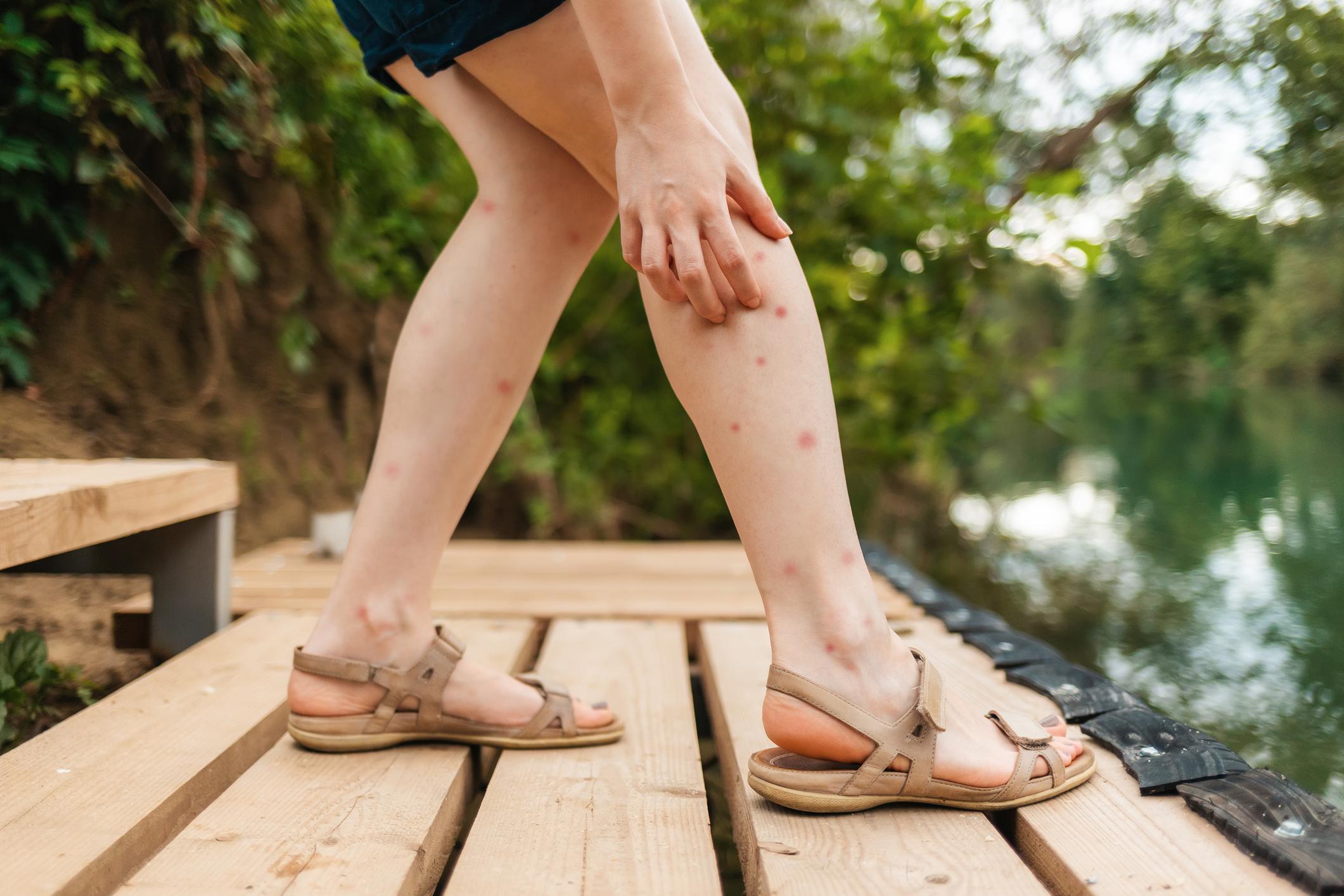How To Identify and Treat Flea Bites on Humans
Posted by Mosquito Squad
July 25, 2025

Author: Emma Grace Crumbley, Entomologist
Fleas
Fleas are tiny, jumping, biting insects that belong to their own unique order, Siphonaptera. Translated from Greek, “siphon” means tube-like, and “aptera” means without wings – so fleas are essentially flightless, sucking parasites. In more technical terms, fleas are considered obligatory hematophagous solenophages. They are obligated (obligatory) to feed on (“-phagous”) the blood of warm-blooded animals (“hemato”) to survive, and they do so by locating capillaries on their hosts and using their specialized piercing/sucking mouthparts to draw blood (“solenophagy”).
In the US, there are more than 300 different species of fleas. When we think of fleas, we often think of how they affect our pets. Cats and dogs can be easily targeted and attacked by fleas when they go outside to play in flea harborage areas. Flea bites on animals can lead to intense irritation, excessive scratching or licking, hair loss in affected areas, and even the transmission of viruses, bacteria, and other parasites. When looking for flea bites on your pet, the American Kennel Club recommends checking for red, irritated skin, scabs, and fleas found in their fur.
But flea problems don’t stop with our furry friends. According to the CDC, there are at least four species of fleas that can directly affect human health. These include cat fleas (Ctenocephalides felis), dog fleas (Ctenocephalides canis), ground squirrel fleas (Oropsylla montana), and Oriental rat fleas (Xenopsylla cheopis). While most flea bites will only leave itchy, red bumps behind, there is a risk of contracting flea-borne diseases. In March 2025, the CDC released an alert stating that murine typhus, a flea-borne bacterial disease, was experiencing a resurgence in urban areas across the US. Symptoms of murine typhus include flu-like symptoms accompanied by a hives-like rash. Though most cases of murine typhus can be effectively treated with antibiotics, severe or untreated cases can lead to hospitalization and, in very rare cases, death.
Flea Bites & Remedies
While it's hard to see what flea bites look like on our pets, as their fur conceals the bite marks well, flea bites on people are easy to spot. As fleas tend to feed and live in groups, flea bites usually appear as multiple small, red or pink clustered bumps on the skin that are incredibly itchy. This itchiness comes from the flea’s saliva, similar to the itchiness you feel after a mosquito bite. Flea bites are not painful, but can definitely be felt when the flea is biting. Some people describe flea bites as a pin-prick sensation or a slight pinch, followed by intense itchiness. It's important to avoid scratching flea bites as it can lead to further irritation, infection, and scarring. Flea bites and their symptoms usually only last a few days, though individuals with insect allergies may experience prolonged or more severe allergic reactions.
To relieve the itchiness and soreness of flea bites and help your body recover, the Cleveland Clinic recommends taking antihistamines and hydrocortisone to help soothe the body's immune response to the bites. Other home remedies the clinic recommends include icing the area to reduce inflammation, adding aloe vera or honey directly to the bites to relieve itchiness and pain, and holding a cooled, steeped chamomile tea bag to the bites to allow the antihistamines and antioxidants in the tea to soothe and help heal the bite areas.
Prevention & Control
The most effective way to treat a flea problem is to prevent it from happening in the first place. Thankfully, there are a few easy steps you can take to prevent fleas from taking over your yard and nibbling on you and your pets:
- Keep a Tidy Yard – Fleas harbor in shaded, grassy areas around your home. By keeping grasses trimmed, leaf litter bagged, and woodpiles away from the house, you can reduce flea activity and help prevent a future flea outbreak
- Check Your Pets – If you have outdoor cats or let your dogs run free in the backyard, they will likely encounter fleas sooner or later. Checking your pets regularly for evidence of fleas can help catch the problem quickly. Look for itchiness, stressed pet behavior, and flea dirt or adult fleas.
- Clean Your Home – When you suspect you have a flea problem, whether it's with the pets or people in your house, take time to deep clean and remove any fleas you find. Vacuuming areas where pets hang out can quickly and effectively remove pests for easy disposal.
- Set Up Flea Control Services – Fleas can be frustrating, but you don't have to deal with them by yourself. Mosquito Squad Plus offers flea treatment services in addition to our traditional barrier treatments. Professional flea control services are the most effective ways to prevent infestations and manage existing flea populations. Our highly trained technicians identify areas where fleas thrive and apply products that control and deter them for up to 21 days.
Itching For Some Relief? Call the Squad!
Don’t fleas ruin your outdoor fun. Find a Squad near you today to take back your yard! Call today for a free quote and to learn about extensive services and pest packages. Services vary by location.
Disclaimer: The content of this blog is for informational purposes only and should not be considered professional medical advice. Consult with a qualified healthcare professional for any health concerns or before making any decisions related to your health or treatment.
